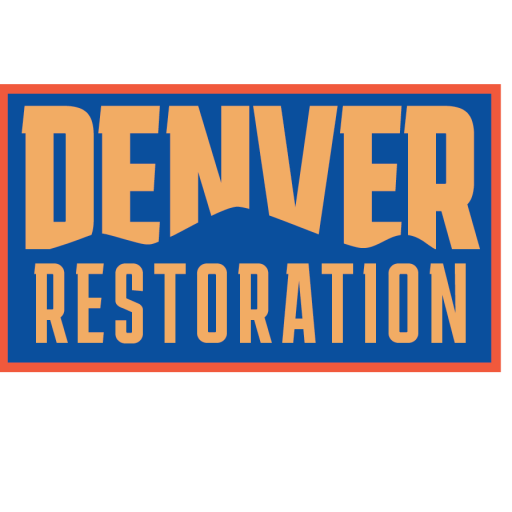Embracing Effective Fire Recovery Strategies
In the wake of a fire disaster, it’s crucial to embrace efficient fire recovery tactics that deliver results in the shortest time possible. These strategies help restore your damaged property to its original state with minimum disruption, letting you resume your life more quickly. This post will help you discover simple recovery tips that are not only effective but also practical for any homeowner, business owner, or property manager.
The post-fire phase is usually chaotic, and moving forward might seem impossible. However, damage assessment and estimation is the first step towards a successful fire recovery. It’s during this phase that professionals evaluate the extent of fire and smoke damage, identify areas that require immediate attention, and formulate a restoration plan.
Remember to cooperate with these professionals. Provide them with any necessary documentation to facilitate a more accurate damage estimation. While the process might be overwhelming, it’s an essential part of the recovery phase.
Embracing Restoration Techniques and Equipment
Depending on the extent of the damage, various restoration techniques might be employed. This could range from dry cleaning, wet cleaning, immersion cleaning, or foam cleaning, just to mention a few.
These techniques are often carried out using specialized equipment specifically designed to salvage items damaged by fire and smoke. The goal of this phase is to restore your property while mitigating the risk of further damage. Find solace in understanding how these techniques and equipment strengthen your home against future fire risks.
Grateful for Health Safety and Environmental Considerations
There’s more to fire recovery than simply cleaning up the mess. It also involves ensuring that the environment is safe for habitation. Professionals will often conduct tests to ascertain the levels of soot, smoke, and other potentially harmful substances. They also ensure that the clean-up process is environmentally friendly and adheres to health safety regulations.
Appreciating the Role of Insurance and Legal Compliance
Fire recovery doesn’t only concern the physical restoration of your property. It also involves dealing with insurance companies and complying with legal requirements. Skilled professionals will guide you through the process by assisting in claim processing and ensuring your property’s restoration adheres to the local building codes.
Streamlining this process helps alleviate stress and makes the journey towards recovery a bit smoother. It’s exactly why you should be thankful for easy solutions in this challenging phase.
The Importance of Effective Customer Communication
Clear communication between clients and the restoration company is paramount. Professionals walk you through the entire restoration process, explaining every procedure to ensure you understand what’s happening. This open line of communication brings a soothing effect and reassures you that your property is in capable hands.
Handling Crisis Management with Ease
Fire recovery is indeed a crisis that needs effective management. Professionals offer practical solutions to prevent a bad situation from escalating. Achieving this requires a swift response, immediate mitigation, and effective customer communication. The ability to handle this crisis efficiently is one reason why you should indeed be thankful for simple recovery tips.
Regardless of the magnitude of the fire, recovery is achievable. Embrace these simple recovery tips and you’ll be amazed at how swiftly and seamlessly you can bounce back from such a setback. It’s during such times that we find ourselves immensely thankful for the simple solutions that facilitate effective fire recovery.
Understanding Mold Remediation After Water Damage
When water damage occurs, the aftermath can often lead to the growth of mold in your property. This is a very common scenario, especially in humid climates or after flooding. However, mold can grow in any environment where moisture is present, damaging the structure of the affected area and leading to various health issues.
With the application of the right techniques, professionals can carry out a thorough mold remediation process. This involves identifying mold-contaminated areas, isolating the infested areas, removing the mold and ensuring the moisture levels are controlled to prevent future growth. Remember, correct handling of such hazards is crucial to the restoration process.
Post-Restoration Cleaning and Sanitization
While the fire or water damage restoration is practically finished, one final step remains – cleaning and sanitization. This process involves thoroughly cleaning the property and eliminating any lingering smoke residue, soot, or mold growth. It’s during this stage that the use of professional-grade cleaning agents play an important role in bringing back the aesthetic appeal of your property.
In situations where there were sewage leaks or water damage, sanitization is necessary to ensure the property is free from bacteria, viruses, or other harmful microorganisms. Post-restoration cleaning and sanitization ensure the area is safe and ready for habitation or business operation. Being diligent in these procedures can restore dignity to your property after a disaster.
Property Protection and Pre-loss Condition
One significant concern amongst property owners after a disaster is whether their property can return to its pre-loss condition. With professional restoration services, this is not just a possibility but a certainty.
Specialized tools and expertise are applied to restore the damaged areas to their original condition as closely as possible. In some instances, improvements may be made to increase the property’s value and ensure it’s better prepared for potential future disasters.
In addition, property protection measures are put in place during the restoration process to protect undamaged areas from further harm. This approach saves you both time and resources, making it a key aspect of effective recovery.
The Role of Advanced Technology in Restoration
The realm of fire and water damage restoration has seen significant advancements in technology. These latest advancements help restoration experts to conduct their work more efficiently and effectively, reducing downtime and improving the final result.
From state-of-the-art moisture detection equipment to advanced air scrubbers and dehumidifiers, these tools aid in restoring the property to its original condition with precision and efficiency. They also help to ensure a thorough and comprehensive restoration process, leaving no stone unturned. Staying informed about these advancements can make the recovery process more manageable.
Understanding the Process of Deodorization
After a fire, the lingering smell of smoke can be an unpleasant reminder of the incident. Similarly, water damage can also cause a musty odor due to the growth of mold and mildew.
Deodorization is an important part of the restoration process, helping you regain the comfort of your living or working space. Specialists use industrial air scrubbers, fogging equipment and air movers to get rid of these stubborn odors, once again making your property feel like home.
Reconstruction: The Final Stage of Restoration
In some cases, the damage incurred may be so severe that cleaning and restoring alone is not enough. The affected area may need to undergo reconstruction to get it back to its pre-damaged state.
Skilled professionals handle this process, taking into account the disaster’s nature and the area’s original design. They ensure that the reconstructed areas blend seamlessly with the undamaged areas, preserving the original aesthetic value of the property.
At the end of the day, the key to effective fire and water damage recovery lies in quick, decisive action. The sooner the recovery process begins, the better the results can be. Embracing these effective recovery strategies facilitates a smooth transition back to comfort and regularity in your life. It’s a testament to the importance of professional restoration services in overcoming the devastating effects of a disaster.

